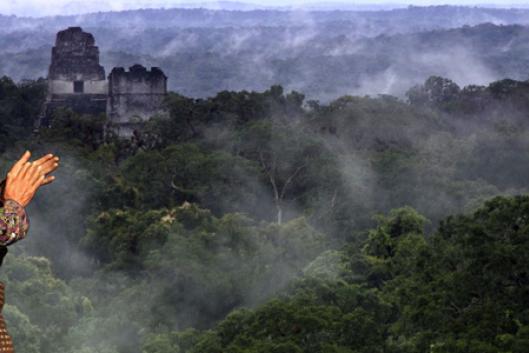When we think of the countries ranging from southern Mexico to Panama, we tend to speak of Central America. That is, in our imaginary, we use that name to describe the territory located between the southern and northern regions of the American continent. However, the histories, cultures, economies and politics of this region tell a different story, forcing us to reflect further on their boundaries and definitions.
While administratively, Central America comprises seven countries—Guatemala, Belize, El Salvador, Honduras, Nicaragua, Costa Rica and Panama—some historians still demarcate the region according to limits established by one of the Spanish colonial viceroys, which would include what constitutes today the countries of Guatemala, El Salvador, Honduras, Nicaragua and Costa Rica.
Meanwhile, anthropology defined Mesoamerica as the territories including the southern half of Mexico, the countries of Guatemala, Belize and El Salvador, and western Honduras, Nicaragua and Costa Rica; where groups from Pre-Columbian Mexico and the Caribbean—such as the Mayas, Lencas, Pipiles, Kunas, Chorotegas, Nasos, Bribris, and others—settled and have inhabited these lands for millennia. We must not get confused by yet other divisions created by international organizations to attempt economic "integration," aimed at expanding neoliberal trade in these territories.
But the official, anthropological and colonial history does not take into account the other diverse stories that peoples, cultures and geographies tell us—those that have to do with cultural and political exchanges, resistance struggles, perceptions, and the formation of sacred places and territories—stories that give a sense of belonging to this "Middle America" in the broad sense of the word, from southern Mexico to Panama.
"Middle America" thus is a territory defined and redefined over the years by its peoples and cultures. Over time however, and especially since the colonial era, it has played a role in territorial disputes among European powers aiming to explore and control its "natural resources"—with the Unites States entering in the late 19th Century. Its location is strategic because it offers a maritime shortcut between the Atlantic and Pacific oceans. Furthermore, it is a highly biodiverse region with forests and mangroves, fertile soils and a wealth of freshwater reserves; and it has huge oil and mineral reserves.
Throughout a little more than last century, these territories have alternated between liberation and social emancipation movements followed by bloody military dictatorships. The intense political violence and social persecution that continues today has not prevented resistance struggles from multiplying in every part of the region. However, with movements and grassroots organizations currently focused on defending their territories from the destructive extractive industries model, violations of human and collective rights have reached alarming levels.
This newsletter aims to support and honor these diverse peoples and their resistance struggles. Thus, it is focused on reflecting on that "Middle America;" that is, the territories defined by its peoples, stories and struggles, from southern Mexico to Panama. Working with allied organizations from these territories, WRM has sought to highlight the demands and struggles people have been engaged in for many years, to defend their forests, lands and cultures.
The push to expand monoculture plantations, mining and oil concessions, REDD+ style "conservation" projects, dams, and infrastructure projects, among others, has gone hand in hand with violent repression—with almost total impunity—of more and more people resisting this economic model that serves big capital. In the words of Berta Cáceres, indigenous leader killed in Honduras earlier this year, and whose legacy has transcended the territories of "Middle America:" "Mother Earth—militarized, fenced off, poisoned, where basic rights are systematically violated—demands that we act. Let us build societies able to coexist in a just and dignified way, for life. Let us join together and, with hope, continue defending and caring for the blood of the earth and her spirits."
We hope this newsletter helps shine a light on these struggles, in order to better understand the various processes seeking to impose upon these territories.
